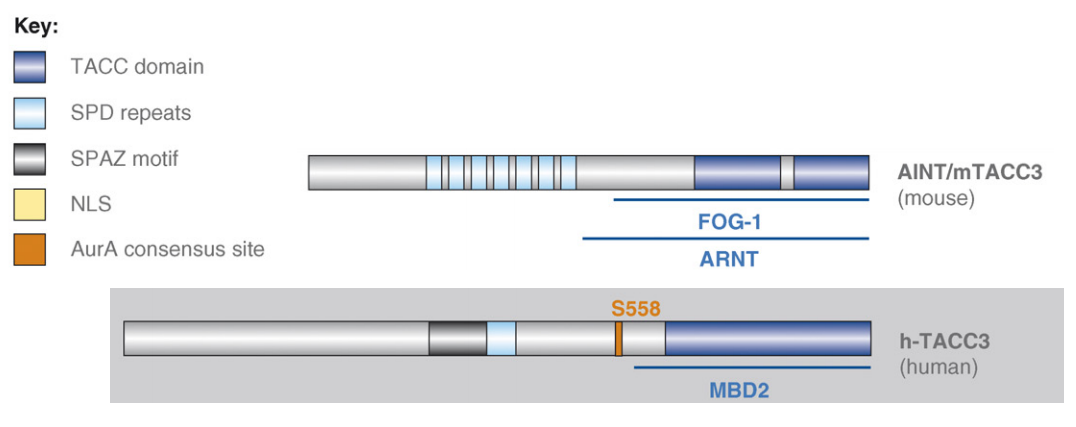Creative Biolabs is challenging the perceived limits of drug discovery. At present, we are designing a protein hydrolysis pipeline for PROTAC® (Proteolysis Targeting Chimeras) protein degrader, which aims to selectively and efficiently degrade and remove pathogenic proteins by using the human body's own natural protein disposal system (the ubiquitin-proteasome system). For transforming acidic coiled-coil-containing protein 3 (TACC3), we are also confident that we can provide you with one-stop ligand design services for TACC3-targeting PROTAC®.
As one of the spindle-regulatory proteins, TACC3 localizes on the mitotic spindle during mitosis and plays an important role in spindle assembly, chromosomal function, and mitotic progression. A large number of studies have shown that TACC3 helps spindle formation in proliferating cancer cells, which is overexpressed in many human cancers, including lymphoma, ovarian cancer, squamous cell carcinoma, and breast cancer.
The depletion of TACC3 results in a series of abnormal changes, including a slight reduction of microtubule aggregation, chromosome dislocation of caspase-dependent apoptosis, and aggregation of cancer cell centrosomes with redundant centrosomes. In addition, the conditional destruction of TACC3 has been proven to be able to make the thymic lymphoma of p53-deficient mice subside without any obvious abnormality in normal tissues. These results indicate that TACC3 is an effective molecular target for anticancer drug discovery.
TACC3 is an Epo-inducible member of the TACC family. Each of them has a C-terminal coiled-coil domain of about 200 residues, which is highly conserved in the whole evolution process and interacts with numerous transcription factors and chromatin-modifying proteins. TACC3 is involved in the regulation of microtubule nucleation at the centrosome and functions in the stabilization of the gamma-tubulin ring complex assembly.
 Fig.1 TACC3 structural organization and regions of interaction with binding partners. (Peset, 2008)
Fig.1 TACC3 structural organization and regions of interaction with binding partners. (Peset, 2008)
Previous studies have shown that the small-molecule ligand KHS108 can slightly weaken TACC3 protein levels. Aiming at the overexpression of TACC3 in various tumors, the development of selective degradation strategies for TACC3 may be an effective way to discover new drugs.
Nowadays, in the ligand design for TACC3-targeting PROTAC®, we proposed a concept that two kinds of ligands are used, one is methyl-bestatin (MeBS) as a ligand for cellular inhibitor of apoptosis protein 1 (cIAP1) ubiquitin ligase, the other is the ligand KHS108 of the target protein TACC3, which are connected by a linker. This PROTAC® has the potential to induce ubiquitination and degradation of the TACC3 protein, providing a powerful drug discovery for cancer treatment.
Based on the understanding of the TACC3 structure, our ligand design strategies include small molecules (structure-based computational methods), peptides and antibodies (phage display method).
Along with our extensive experience in PROTAC® development, Creative Biolabs is committed to designing ligands for a variety of targets for our customers all over the world. If you are interested in our service, please do not hesitate to contact us for more details.
Reference
Our customer service representatives are available 24 hours a day, from Monday to Sunday. Contact Us
